
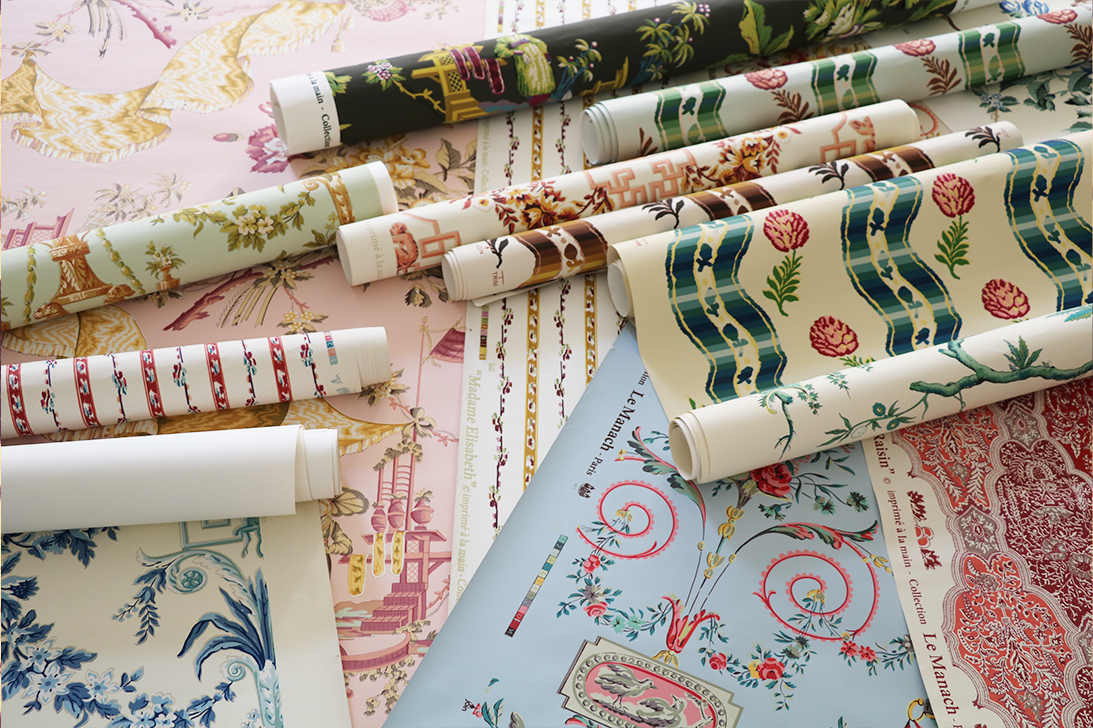
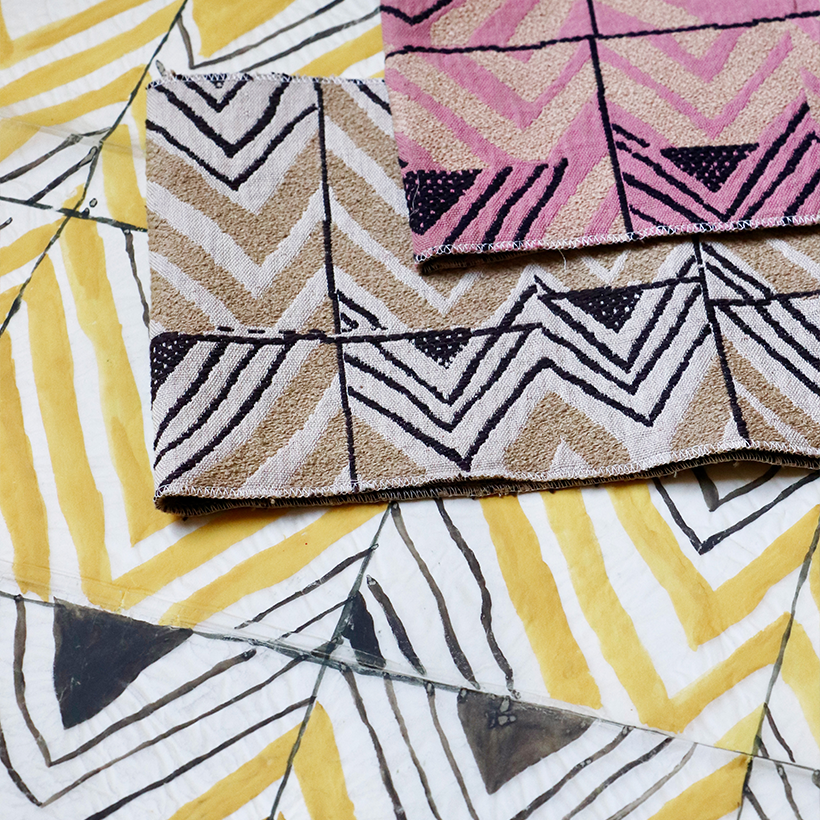
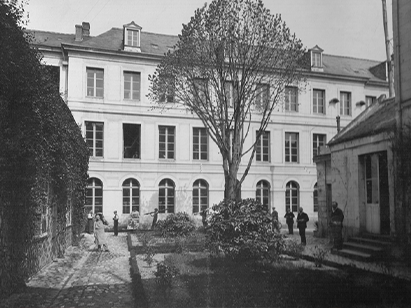

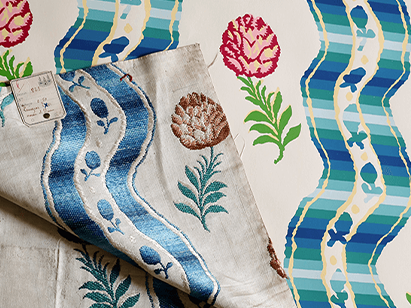
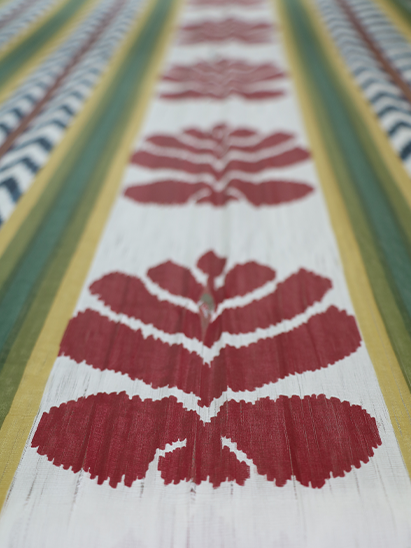
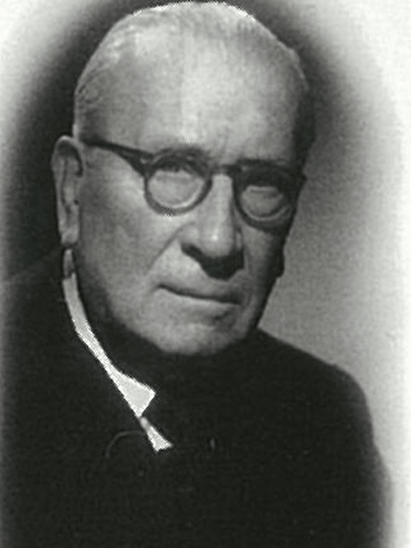
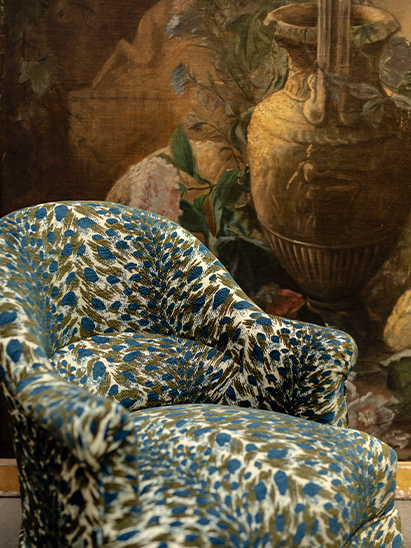
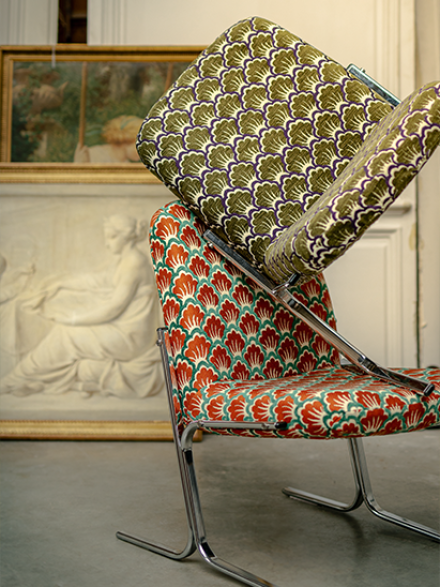
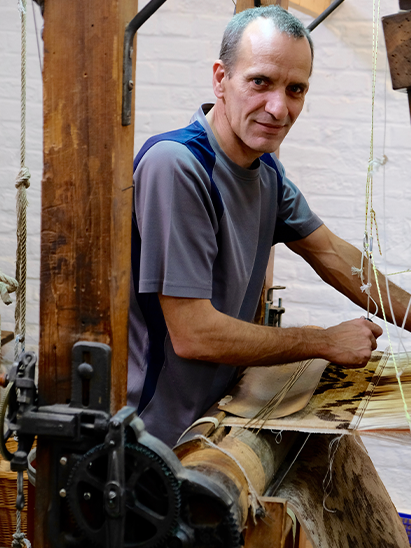
LE MANACH
LE MANACH, A FRENCH TREASURE
The House of Le Manach is the very quintessence of French style, a subtle mix of French tradition and exoticism.
It takes its inspiration from the silks of the Far East and Central Asia, in the printed cottons of the 18th century,
but also in the Art Deco period and ethnic motifs.
ORIGINS
A silk fabric factory founded in 1829 by Eugène Fey and Charles Martin,
it was run by various associates during the 19th century. Georges Le Manach,
whose name is still attached to the brand today, joined the House in 1906 and played an active role in its growth and reputation.
After being managed by the same family for five generations, Le Manach was acquired by Pierre Frey in 2014.
1829
CREATION OF THE "MANUFACTURE DES TROIS TOURS"
Eugène Fey and Charles Martin decided to set up a silk factory in Tours, in an old 18th-century post house.
Their workshop included all the production steps for fabrics - spinning, weaving, dyeing - and produced brocatelles,
damasks and lampas that rivalled the finest fabrics from Lyon.
1849 - 1863
THE PERIOD OF AWARDS
The Manufacture won many awards at the International Expositions of 1849, 1855 and 1863, holding high the idea of beauty.
Its fabrics decorated many historical homes and châteaux, including Compiègne, Fontainebleau, Versailles and Vaux le Vicomte.
1875
ACQUISITION OF THE ARCHIVES
Under France's Second Empire, Le Manach acquired many textile archives to stimulate their creations and their sense of innovation.
The House once again applied techniques that had been somewhat forgotten and contributed to the rediscovery of a precious craft.
1894
THE FIRST PRINTS
The House had been specialized in silk, but Messrs.
Démonté and Poirier, the directors at the time, decided to diversify
the House's product offer by producing prints on percale and going into warp printing.
1906
GEORGES LE MANACH
Monsieur Démonté's associate, Georges Le Manach, married his daughter and brought the House into the modern era.
He developed the Toiles de Tours and took up a new creative approach focusing
on collaborations with interior decorators, notably René Prou.
1928
"LES TOILES DE TOURS" OR AVANT-GARDISM
That is the name that Georges Le Manach gave to the new type of jacquard that he developed in the 1920s.
For the Paris Colonial Exposition he presented a collection of African inspiration, then a second in a geometrical spirit.
Encouraged by this success, he went further and transposed a large number of classical velvets and brocatelles into spun rayon and cotton.
2014
PIERRE FREY ACQUIRES LE MANACH
Very committed to France's textile heritage, the House of Pierre Frey decided to acquire Le Manach and to save the heritage collection
at this bastion of unique know-how. Le Manach came back to life in keeping with its history and the magic of its products.
2018
OLIVIER JOANNEN, A DECORATED HAND LOOM WEAVER
The House of Pierre Frey promotes exceptional know-how and brought along Olivier Joannen,
a hand loom weaver at Le Manach, to join in the relaunch adventure.
Named a Knight of France's Order of Arts and Letters, he was decorated by the Minister of Culture in November 2018.
LE MANACH TODAY
Unknown to the general public, Le Manach is adored by aesthetes.
The tower canvases are reinvented in made-to-measure or via new colorations,
the hand-woven leopard velvet is always a huge success and the archives are available
in sumptuous wallpapers made according to the rules of art.
THE ARCHIVES
The heritage collection of the Pierre Frey House includes more than 6,500 Le Manach documents and archives, from the 16th century to today.
This collection, composed of textiles, maps, drawings, testifies to the quality of the achievements of this illustrious House
and offers an unlimited source of inspiration for the design studio and our decorator clients.
The House of Le Manach is the very quintessence of French style, a subtle mix of French tradition and exoticism.
It takes its inspiration from the silks of the Far East and Central Asia, in the printed cottons of the 18th century,
but also in the Art Deco period and ethnic motifs.
ORIGINS
A silk fabric factory founded in 1829 by Eugène Fey and Charles Martin,
it was run by various associates during the 19th century. Georges Le Manach,
whose name is still attached to the brand today, joined the House in 1906 and played an active role in its growth and reputation.
After being managed by the same family for five generations, Le Manach was acquired by Pierre Frey in 2014.
1829
CREATION OF THE "MANUFACTURE DES TROIS TOURS"
Eugène Fey and Charles Martin decided to set up a silk factory in Tours, in an old 18th-century post house.
Their workshop included all the production steps for fabrics - spinning, weaving, dyeing - and produced brocatelles,
damasks and lampas that rivalled the finest fabrics from Lyon.
1849 - 1863
THE PERIOD OF AWARDS
The Manufacture won many awards at the International Expositions of 1849, 1855 and 1863, holding high the idea of beauty.
Its fabrics decorated many historical homes and châteaux, including Compiègne, Fontainebleau, Versailles and Vaux le Vicomte.
1875
ACQUISITION OF THE ARCHIVES
Under France's Second Empire, Le Manach acquired many textile archives to stimulate their creations and their sense of innovation.
The House once again applied techniques that had been somewhat forgotten and contributed to the rediscovery of a precious craft.
1894
THE FIRST PRINTS
The House had been specialized in silk, but Messrs.
Démonté and Poirier, the directors at the time, decided to diversify
the House's product offer by producing prints on percale and going into warp printing.
1906
GEORGES LE MANACH
Monsieur Démonté's associate, Georges Le Manach, married his daughter and brought the House into the modern era.
He developed the Toiles de Tours and took up a new creative approach focusing
on collaborations with interior decorators, notably René Prou.
1928
"LES TOILES DE TOURS" OR AVANT-GARDISM
That is the name that Georges Le Manach gave to the new type of jacquard that he developed in the 1920s.
For the Paris Colonial Exposition he presented a collection of African inspiration, then a second in a geometrical spirit.
Encouraged by this success, he went further and transposed a large number of classical velvets and brocatelles into spun rayon and cotton.
2014
PIERRE FREY ACQUIRES LE MANACH
Very committed to France's textile heritage, the House of Pierre Frey decided to acquire Le Manach and to save the heritage collection
at this bastion of unique know-how. Le Manach came back to life in keeping with its history and the magic of its products.
2018
OLIVIER JOANNEN, A DECORATED HAND LOOM WEAVER
The House of Pierre Frey promotes exceptional know-how and brought along Olivier Joannen,
a hand loom weaver at Le Manach, to join in the relaunch adventure.
Named a Knight of France's Order of Arts and Letters, he was decorated by the Minister of Culture in November 2018.
LE MANACH TODAY
Unknown to the general public, Le Manach is adored by aesthetes.
The tower canvases are reinvented in made-to-measure or via new colorations,
the hand-woven leopard velvet is always a huge success and the archives are available
in sumptuous wallpapers made according to the rules of art.
THE ARCHIVES
The heritage collection of the Pierre Frey House includes more than 6,500 Le Manach documents and archives, from the 16th century to today.
This collection, composed of textiles, maps, drawings, testifies to the quality of the achievements of this illustrious House
and offers an unlimited source of inspiration for the design studio and our decorator clients.
